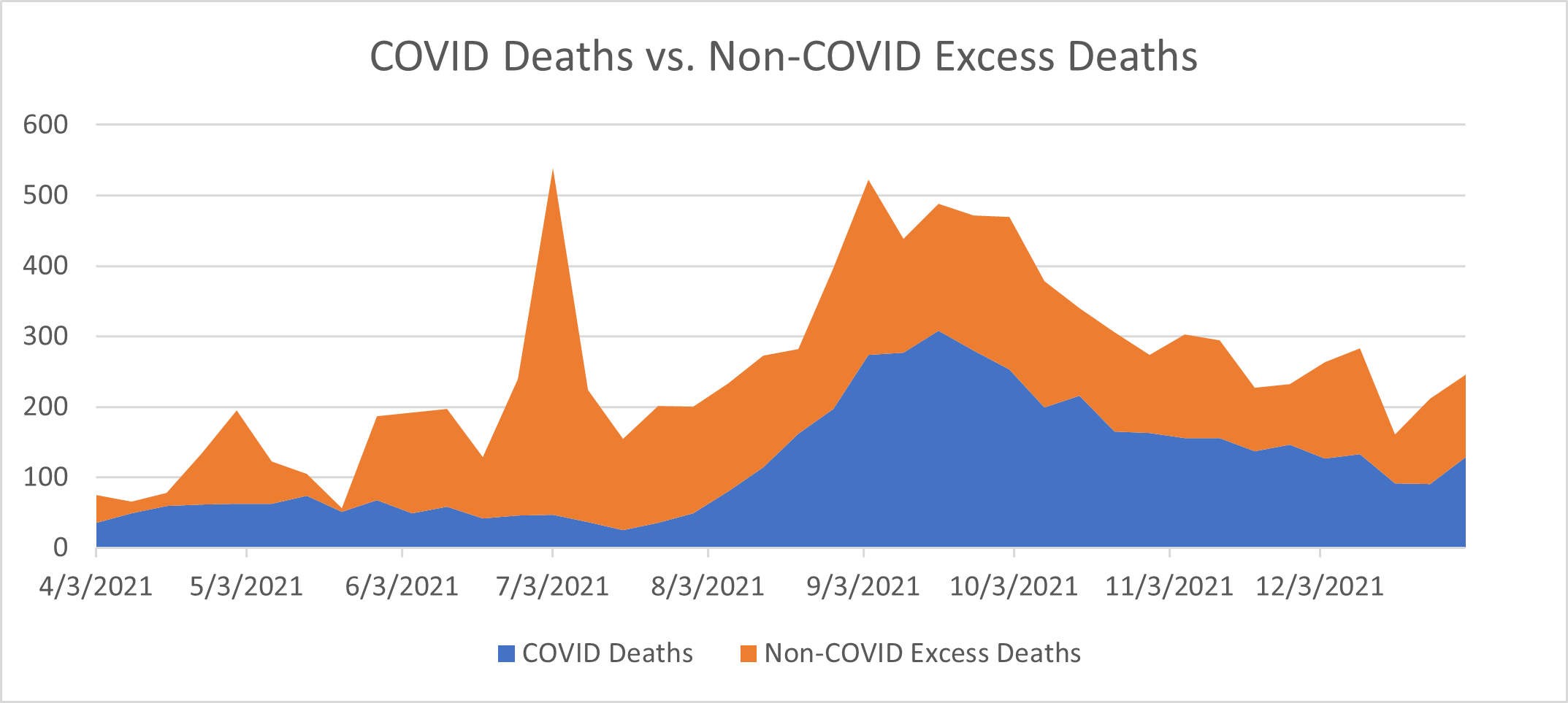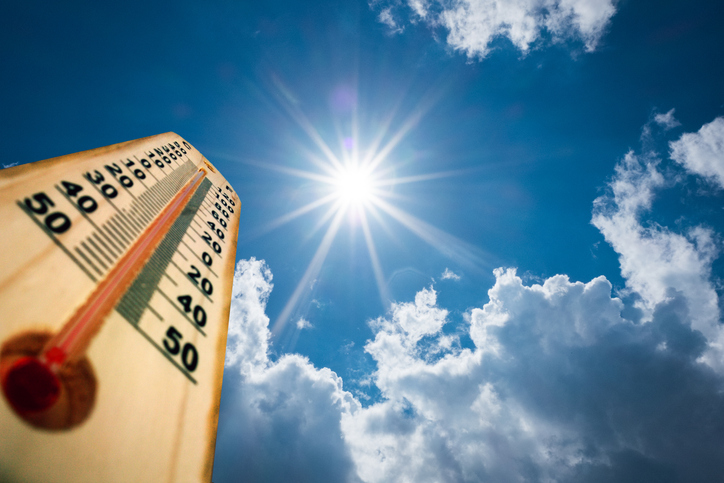When a record-breaking heatwave moved across the Pacific Northwest in late June 2021, the number of excess deaths – the number above a typical amount for June – spiked, reaching the highest total for the year. That amount, and the more than 11,000 excess deaths for all of 2021, tell us a great deal about the tradeoffs of mandated COVID policies and the relative risk of climate change compared to other threats.
While there was a great deal of attention on the remarkable heatwave and its implications for the risk from climate change, the number of excess heat-related deaths was small compared to non-COVID excess deaths in 2021. There were nearly 16 times as many non-COVID, excess deaths as excess deaths from the heatwave.
Despite that fact, state policy has been focused heavily on those climate deaths but has almost entirely ignored excess deaths related to the effects of legal mandates and social COVID restrictions.
Heatwave-related deaths
When the extraordinary heatwave hit last year, it was immediately branded as evidence of climate change, with Governor Inslee claiming, “It’s going to be 105 [degrees] in Seattle today. But it’s 130 when you look into the future at some point.” This statement is embarrassingly unscientific.
There is no scientific scenario, even hundreds of years into the future in the most extreme estimate, in which Seattle reaching that high a temperature. The rapid assessment of the heatwave completed by scientists from around the world found that while climate change may have increased overall temperatures compared to pre-industrial levels, they found, “the heatwave was a very low probability event that was not caused” by climate change.
The heatwave did, however, cause excess deaths to spike. The Washington State Department of Health estimated there were about 100 heat-related deaths during that week. Looking at the number of excess deaths, that estimate is probably low.

The weeks before and after the late June 2021 heatwave had 240 and 224 total excess deaths respectively. During the week of the heatwave, excess deaths jumped to 539, which is 298 more non-COVID excess deaths than in the previous week. Given the stability of COVID-related deaths during that period of time, it is likely that those 298 deaths were virtually all related to the heatwave.
The rise in Non-COVID deaths
As alarming as the death toll from the heatwave is, it is small compared to the rise in non-COVID excess deaths in Washington. These deaths are those above a normal year but were not caused by COVID itself. These include those The Seattle Times called “deaths of despair” related to legal mandates and social restrictions state officials imposed in their effort to fight the spread of the coronavirus.
For all of 2021, there were about 4,700 non-COVID excess deaths. That is equivalent to the deaths from the record-breaking heatwave every three weeks for an entire year.
Interestingly, in the first two months of 2021, there were more COVID deaths than excess deaths, making non-COVID excess deaths negative. There are several reasons this could be true. For example, there may have been fewer seasonal flu-related deaths than normal.
More remarkable is that the total number of non-COVID excess deaths between April and the end of December 2021 was larger than the total number of COVID deaths. Virtually all the focus of elected officials has been on COVID-related deaths. That narrow focus meant they missed a much larger cause of excess deaths and the high mortality cost of their own restrictive COVID policies.
Lives lost silently
Olympia politicians have been very vocal about highlighting the threat from COVID and last summer’s heatwave. Rightly so. Both were serious, leading to significant loss of life in both instances.
However, many of those same politicians ignored the large number of excess deaths caused by the legal and social restrictions they imposed in trying to limit the spread of the coronavirus. For most of 2021, those excess deaths caused by policy choices exceeded deaths caused by COVID and the heatwave, combined.
The 4,700 excess lives lost should be a reminder to politicians and agency leaders that there are unanticipated and unseen costs to their policies. It also demonstrates the value of including legislators in the discussion – as opposed to putting the power in the hands of one man – to provide a more complete picture of the costs of public policy. These are important lessons to learn to ensure fewer people will die unnecessarily the next time we face a public health crisis.




